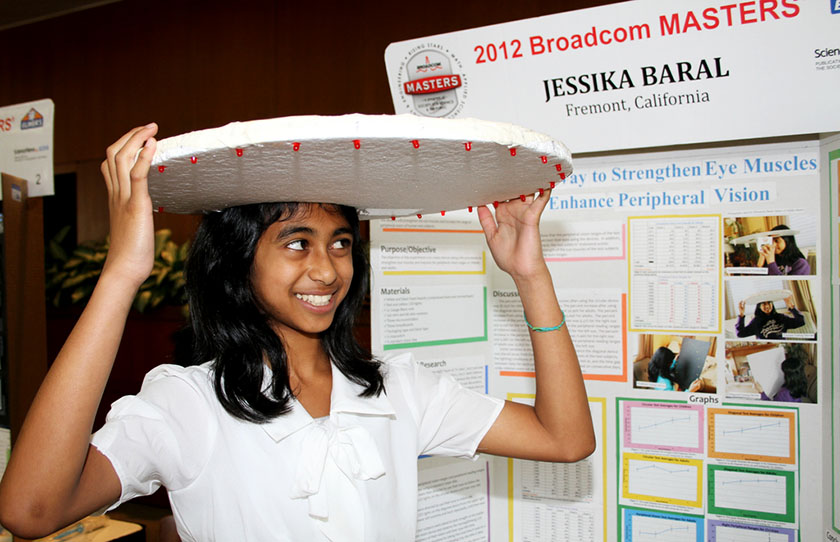Science is the most powerful way to change communities and the world

As a high school student, Jessika Baral applied for a patent on a device she invented. Not many high school students can graduate saying they’ve done that.
Jessika created a device that strengthens eye muscles and improves peripheral vision. She also donated several of the devices to vision-challenged high school students. Now she’s working to develop at test for small cell lung cancer.
Jessika wants people of all genders, races, and ages to engage in science. “We may all be different people, but one of the main things that binds us together is our curiosity,” she said. “Science is the most powerful way to change both our local communities and the world at large.” Read our interview with Jessika below to learn more about her invention and how science fairs inspired her.
DESCRIBE YOUR DEVICE: I’ve used my device in conjunction with a HEOG (horizontal electrooculogram) to allow neurological patients to understand the state of their neurological health (while undergoing treatment) from home and more frequently, without undergoing multiple expensive MRIs.
Join the Society to encourage other young inventors like Jessika!
HOW HAS STEM INSPIRED YOU: STEM inspires me to change the way I approach small tasks as well as larger ones. I use the same troubleshooting methods I would in a lab for small problems such as a broken light bulb in my room.
STEM inspires me to change the way I approach small tasks as well as larger ones.
Through my scientific journey, I’ve learned so much more than a simple textbook could explain because I’ve made mistakes and learned how to solve them on my own through many trials.
People of all genders, races, and ages should engage in science. We may all be different people, but one of the main things that binds us together is our curiosity.
HOW CAN SCIENCE CHANGE THE WORLD: Science is the most powerful way to change both our local communities and the world at large. So in 2010, I founded a non-governmental organization called Medicalcare Organization for Rural Societies (MORS). Through MORS I help train poor, rural tribal high school girls in India and Nepal to become nurse technical trainees.
ON ATTENDING THE WHITE HOUSE SCIENCE FAIR (WHERE SEVERAL SOCIETY ALUMNI ARE INVITED EVERY YEAR): I’m a 2012 Broadcom MASTERS finalist and I attended the 2013 White House Science Fair. Being able to display my poster and present my research to the President, celebrities, and dignitaries in the famous and historic Blue Room was my most memorable part. Bill Nye actually used the device I invented!
It’s a huge relief to know there will always be people I can crack nerdy jokes with.
I made many friends at the White House Science Fair that I still talk to on a regular basis today. It’s definitely a huge relief to know that there will always be people I can crack nerdy jokes with or ask very high-level scientific questions to.
WHAT ARE YOUR CURRENT STEM GOALS: Since the White House Science Fair, I’ve pursued science with much more passion. I worked in two university labs over the past two years and learned a vast array of biotechnology techniques.
Science is the most powerful way to change both our local communities and the world at large.
I also recently won a 2016 CTY Cogito research award. I’ll work with mentors from Johns Hopkins University to solidify my ideas on a strip to accurately, quickly, and cheaply detect small cell lung cancer. A new diagnostics tool that I invented can help doctors better understand patient tumors and their metastatic potentials. The test takes only one minute and costs less than a dollar per test.
I’m indebted to many mentors, starting with my 5th grade science teacher who instilled a love for science in me, to many university professors who took a chance when they opened up their oncology lab to a young 14-year-old.


